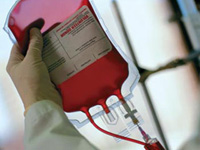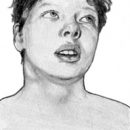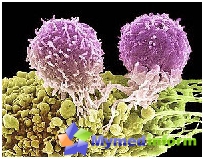What is sepsis? What are the symptoms of sepsis? How to treat sepsis? Answers to these questions you will find in the article.
Content
Sepsis
Sepsis is a serious infectious disease,
caused by diverse pathogens and their toxins.
Characterized by a kind of body reaction with the same type
clinical picture, despite the difference caused it
pathogens. Sepsis can be primary or secondary. At the beginning
Diseases can detect entrance doors - the presence of primary
The focus, however, in the process of development, the influence of it for the course
the septic process can decrease and become poor.
In rare cases, when the cause of sepsis is to establish
It fails, he is called cryptogenic.
The source of the total purulent infection may also be traumatic
Damage (open fractures, extensive burns, wounds, etc.),
as well as such purulent inflammation like Carbuncules (especially
On the face), phlegmon, purulent lesions of the apparent sinuses of the nose,
Plevra, peritoneum, joints, etc. Sepsis can develop when
The presence of inflammatory foci of any localization and magnitude, however
more often occurs with extensive purulent processes.

With a lightning sepsis, the disease develops violently, leading
to the manifestation of the complex of symptoms literally for several
hours, maximum 1-2 days.
When acute sepsis takes several days to detect a complete picture of a total purulent infection.
When subacute, the symptoms of sepsis does not happen
pronounced, as at the first two forms, and the process develops
slowly for several weeks.
Chronic sepsis is determined by the sluggish stream and the presence of low-cost changes that are observed for months.
Recurrent sepsis is characterized by changing the periods of exacerbations,
When all the symptoms get bright manifestation, and periods
remissions when it fails to reveal any noticeable
Signs of infection.
Sepsis with metastases is manifested by the development of multiple
Jumps in various fabrics and organs, which is accompanied by
exacerbation of symptomatics. Opening of uluses leads to a decrease
its brightness, for example, to a decrease in temperature, however
The new formation of uluses these manifestations arise again.
Sepsis clinic without metastases usually more severe and constant,
Remisses are not observed. Great influence on sharpness
Clinical manifestations has a degree of reactivity of the body
On the stimulus.
Frequent signs reflecting the common state disorders
and nervous system activities are headache,
Irritability, insomnia, the oppression of the nervous system, acknowledgment
or even loss (in severe cases) consciousness. Permanent is
Increase in temperature, which in sepsis without metastases is usually
High levels (39-40°C)
and significantly hesitate in the morning and in the evening
Metastasis. Important is a symptom expressed in stunning
chills and pouring. Characteristically,
progressive deterioration of well-being, despite the treatment.
Sometimes hemorrhagic rash appears on the skin. From side
Cardiovascular system usually marked: sharp pulse,
reduction of its filling, decrease in arterial and venous
Pressure, degradation of cardiac activity, trophic
and vascular disorders (breakdowns, thrombophlebitis, thrombosis,
swelling). The functions of parenchymal organs are also noticeably violated.
The deterioration of the kidney activities is observed (reducing relative
urine density and the appearance of protein and uniforms
Elements), liver (often the development of jaundice and hepatitis phenomenon),
The spleen increases.
Typically, violations from the gastrointestinal tract are noted:
Lack of appetite, dry criste, stubborn septic diarins,
nausea and vomiting.
Local symptoms
Wound at sepsis pale, edema, granulation sluggish, pale,
discontinued scarce dirty-muddy species, often with a grinding
odor.
Vascular thrombosis, lymphangitis and lymphadenitis are observed.
Symptoms listed under sepsis differ significant resistance.
Is also underway as the treatment of any infectious process,
but with a common purulent infection should be etiological
and pathogenetic, t.E. Provide comprehensive conduct
Events and means affecting microflora, local
Hearth, as well as on the functions of organs and systems of affected
organism.
If necessary, re-surgical
Intervention (Opening of an abscess, gleaming of veins during rising
thrombophlebitis, amputation limbs, etc.). For success you need
have an individual treatment plan for each patient compiled upon
taking into account the characteristics of the body and the flow of the septic process, its
Phases and others.
Common events are as follows:
- Creating a patient most favorable
Sanitary and hygienic conditions, ensuring full rest,
Careful overall care, oral hygiene, etc.
- Food, being a healing factor, has a very large
value for the outcome of the septic process. It must be full,
high-calorie, tasty rich in vitamins and diverse. This is
Especially important due to severe intoxication in a patient with sepsis,
lack of appetite and large energy consumption. In violation
Secretor and motor function of the gastrointestinal tract of the patient
It is recommended to feed in small portions, giving it before eating
hydrochloric acid with pepsin. Be sure to enter
in the body from 2 to 3 liters per day
in the form of soups, tea, milk and vitamin drink (morse, juices
and etc.)









